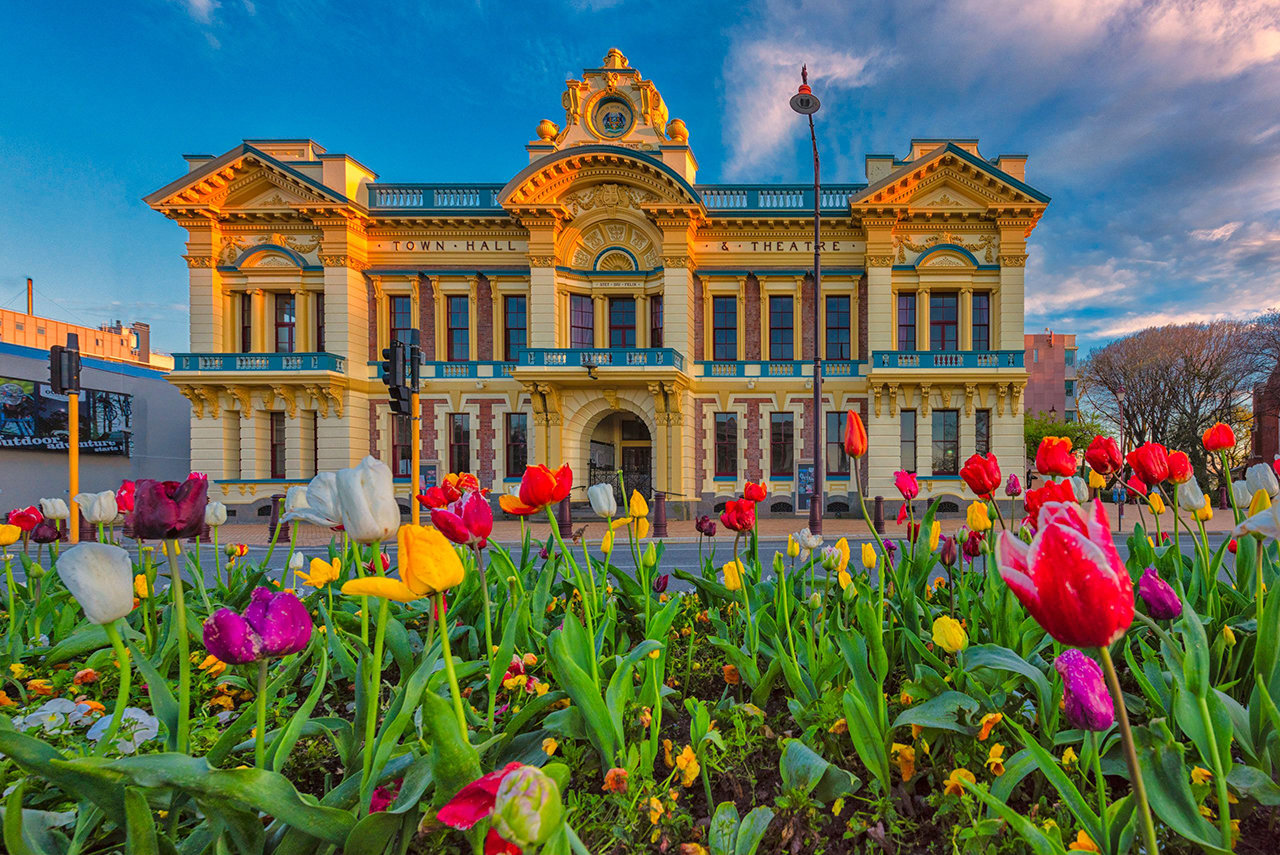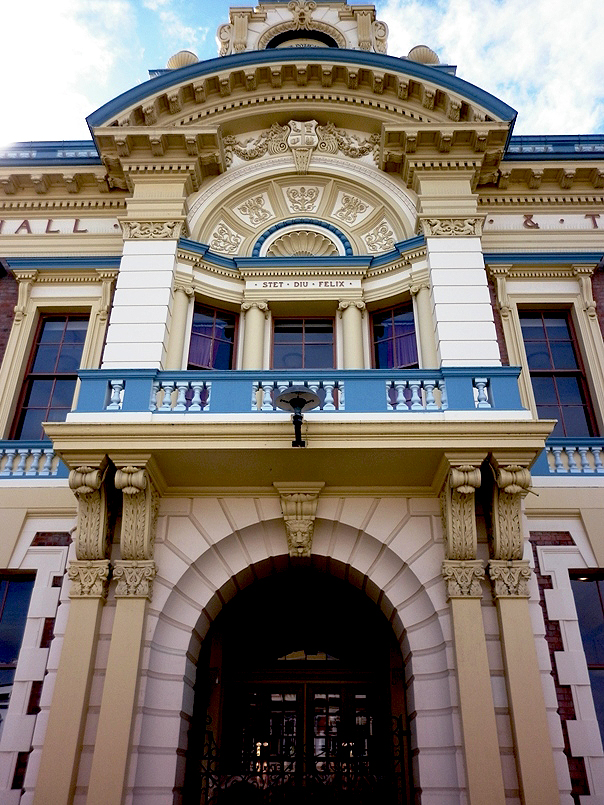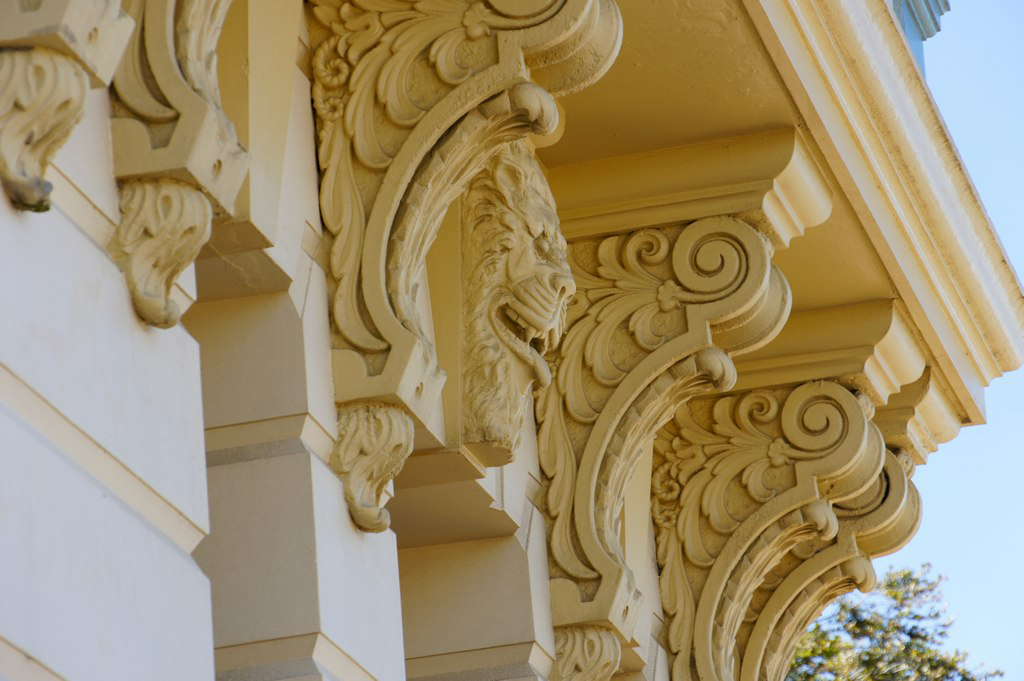The Invercargill Town Hall and Civic Theatre is a prominent landmark on one of Invercargill's main streets. It officially opened in November 1906 and was built for the local council, which had previously been housed in the former Southland Provincial Council Chambers. Two events in the early 1900s led to the local council holding a competition for the design of a new town hall and civic theatre. One was a fire in 1900 that destroyed the former immigration barracks on the Tay Street site; a site that had long been promised to the local council by the government. The fire cleared the way for the land to be transferred. Secondly the Royal Theatre closed at the end of 1902. This had been the centre of entertainment in Invercargill and its closure left the city with few other places for performances. The proposal to build a combined theatre and town hall was controversial. Some residents felt that the erection of a theatre should be a matter for private investment, not public money. Others opposed the project because of their religious beliefs, believing that theatre was sinful. However, the proposal to raise the loan for the building was eventually passed by the city ratepayers. In its call for designs the council announced that it was seeking a 'handsome and pleasing looking building' without 'unnecessary ornamentation', which would cost no more than £15,000. Fifteen designs were submitted and the competition was won by local architect, E.R. Wilson (1871-1941), who designed a two-storey building in an Edwardian Baroque style. Wilson's building combined municipal offices and council chambers with a 'modern' playhouse and hall. In effect he designed two separate buildings, with the municipal offices in front and the theatre behind, connected only by the dress circle staircase rising from the front entrance hall. The theatre itself was said to be similar to theatres built in London around the same time and was one of the first 'true theatres' in New Zealand, with the audience seated close to the stage. It seated up to 1,350 adults and could be used for either opera or theatre. The theatre was lit by electricity generated on the site, still comparatively rare in New Zealand at that time. Over the years it was also used for film screenings, concerts, boxing and wrestling matches. It was also noted for the facilities it provided backstage for performers. Films were shown in the theatre from 1919 to the 1950s. The Tay Street frontage is the most elaborately decorated part of the building. Symmetrical in design, the central entrance is flanked by wings on either side. Of particular note is the plaster decoration on the three pediments. A contemporary newspaper report on the building soon after it opened mentioned that 'the style of architecture is similar to that of our best street blocks, thus setting off the city's principal buildings on a larger and grander scale as a town hall should.' The combination of city hall and up-to-date theatre was seen as unusual at the time of the building's opening. Town halls in the early twentieth century generally included some form of public auditorium and often doubled as places of entertainment. The Auckland Town Hall (also registered with the New Zealand Historic Places Trust Pouhere Taonga) is one example of this. It was less usual to have a purpose-built theatre attached to the town hall, and indeed the town hall part of the Invercargill complex had its own lecture hall on the first floor, which could seat 360 people. In the 1960s new council offices were built and the majority of the city council vacated the Invercargill Town Hall and Civic Theatre. However the Council Chamber and committee room continue to be used by the city council. The Town Hall and Civic Theatre play an important part in Invercargill's social and cultural life and the building is historically significant as the centre of city governance for most of the twentieth century. It is architecturally significant as a fine Edwardian Baroque building and an impressive part of the Tay Street townscape. It remains an important symbol of civic pride in Invercargill, even more so since its renovations in 1984.



Location
List Entry Information
Overview
Detailed List Entry
Status
Listed
List Entry Status
Historic Place Category 1
Access
Private/No Public Access
List Number
2521
Date Entered
11th November 1984
Date of Effect
11th November 1984
City/District Council
Invercargill City
Region
Southland Region
Legal description
Secs 5/7 17/18 Pt 16 Lots 1/2 DP4623 Blk III Invercargill Tn
Stay up to date with Heritage this month
